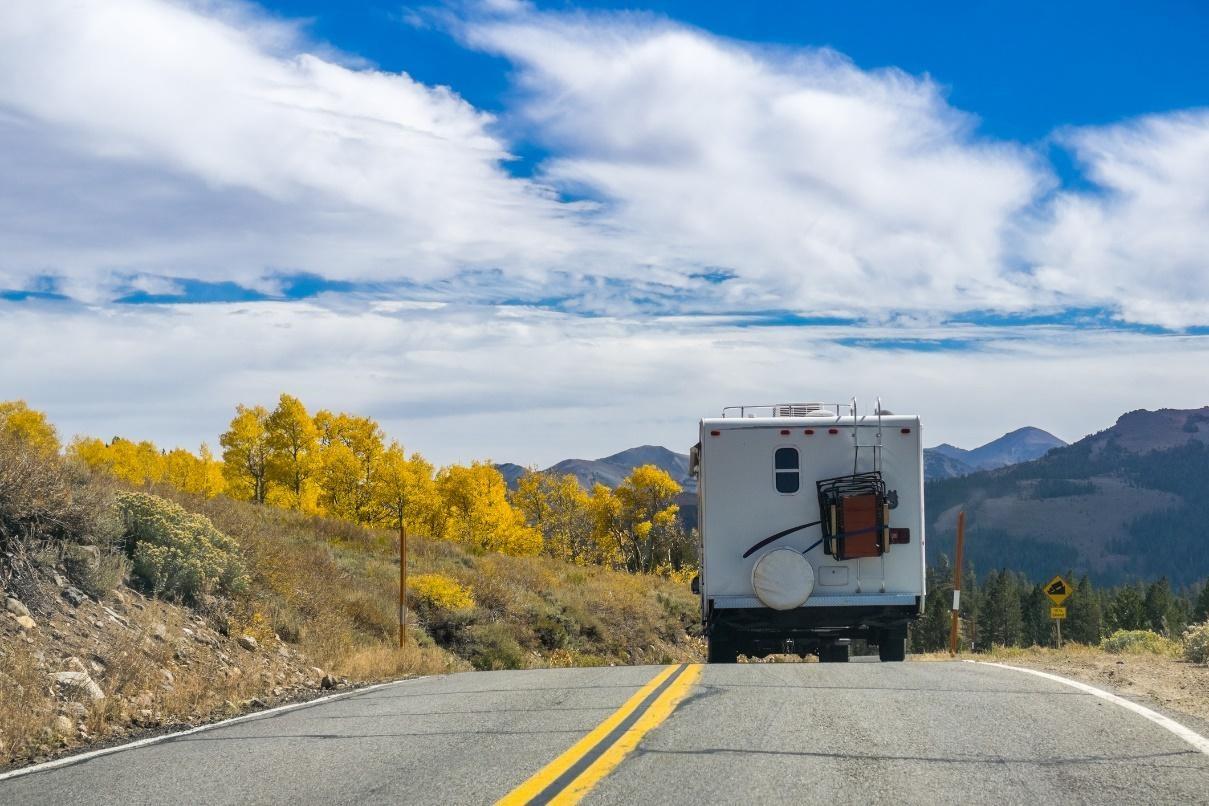
RVers Hunt for Hidden Caches in a Grown-Up Version of Hide-and-Seek
From the Archives
If you’re looking for family-friendly RV activities to enliven your next journey, geocaching offers fun for travelers of every age. Whether you’re seeking entertaining distractions to break up a long road trip or are planning some outings near your RV resort, you’re likely to have dozens or even hundreds of geocaches to choose from.
What Is Geocaching?
Sometimes described as a modern-day form of treasure hunting, geocaching involves using global positioning system (GPS) coordinates to hide and find hidden caches in outdoor locations. Each cache is typically secreted in some type of waterproof container; they can range from microcaches, which are small canisters or boxes less than 100 milliliters in volume, to large caches in 20-liter buckets or even bigger containers.

Regardless of size, every geocache will contain a logsheet or logbook that allows participants to add their name and the date they found the cache. Larger containers may contain tradable items and/or Trackable tokens. Participants who remove a “treasure” from the cache are expected to replace it with an item of equal or greater value. Those who pick up a Trackable aren’t required to leave anything in its place, but they do need to help it on its journey by moving it to another cache.
Geocaches are generally hidden outdoors in publicly accessible areas. Participants can obtain GPS coordinates from a geocaching website or app to locate the vicinity of the cache’s secret hideaway. The website may provide a few coded clues as to the location; from there, it’s up to the player’s instincts and sharp eyes to find the hidden container.
Caches are usually placed where able-bodied people can easily access them, but they are carefully concealed so that outsiders aren’t likely to notice them. Geocachers call those outsiders “muggles”—a term that refers to non-magical humans in the Harry Potter series. If a cache is removed or plundered by non-players, it is commonly said to have been “muggled.”

Geocaching jargon features a variety of acronyms, including BYOP (bring your own pen/pencil), FTF (first to find), TFTC (thanks for the cache) and TNLNSL (took nothing, left nothing, signed log). Some acronyms provide hints on finding a cache, such as SOOP (something out of place) or UPS (unusual pile of sticks). P&G, or “park and grab,” refers to a cache located near a parking area that can be quickly found and logged.
How Did Geocaching Start?
The geocaching craze began when President Bill Clinton officially gave the directive to end selective availability (SA), which was the government’s practice of scrambling GPS signals for security purposes. The goal was to make GPS more responsive to civil and commercial users worldwide. As a result, the discrepancy between a stated location and its actual position was reduced from 100 meters to less than 20. SA was disabled at midnight Eastern Time on May 2, 2000.
Computer consultant Dave Ulmer was among those who found great interest in this new development. He decided to test the accuracy of the descrambled signals by hiding a cache in the woods and sharing the coordinates with other GPS enthusiasts in the sci.geo.satellite-nav USENET group, calling it the “Great American GPS Stash Hunt.” His first cache was a black bucket containing a logbook, pencil and a few small prizes.
Within days, other GPS users located the cache and shared their experiences online. It was the start of a game that rapidly spread around the world as seekers became hiders, attracting even more seekers. The activity soon had its own website, mailing list and a new name proposed by stash hunter Matt Stum: geocaching. The prefix “geo” alludes to the global nature of the game and its use of geography, while “cache” refers to a hiding place or a computer’s short-term memory store. Therefore, the term “geocaching” combines three critical elements of the game—geography, hiding, and technology.

Just a few months later, web developer Jeremy Irish created a new website—geocaching.com—with input from Mike Teague, a geocaching pioneer and the first to find Dave Ulmer’s original stash. The new site launched on September 2, 2000, with details on 75 known caches around the world. As word spread and technology evolved, with GPS functionality now integrated into smartphones, the geocaching community expanded exponentially. Today, geocaching.com has more than 10 million registered users and maintains listings for more than 2.8 million geocaches hidden in some 180 countries worldwide.
How Can RVers Get Started With Geocaching?
If you’ve decided to add geocaching to the RV activities planned for your next adventure, the best place to get started is at geocaching.com. The website provides answers to many frequently asked questions in its “Geocaching 101” guide and also features helpful videos and tutorials. Once you’ve learned the basics, you can register for a free account or upgrade to a premium account to access more features and listings.
Users can search for nearby caches via the website or by using an iPhone, Android or Windows mobile app. Results may be viewed in list form or on an interactive map. Each geocache listing indicates the difficulty level of locating the cache and navigating the terrain based on a rating of one to five stars, so beginners can start with a cache that’s easy to find and reach.

Most geocachers carry a pen or pencil to sign the logbook inside the container, and some bring their own log to track details and comments on their find. If you plan to collect a small treasure from each geocache as a memento of your adventures, bring a little toy or trinket to leave behind in its place. If you pick up a Trackable item, such as a Travel Bug or Geocoin, make sure it finds its way into another cache along your route. And don’t forget to add an entry to the online listing for the geocache; the people who hide caches enjoy hearing from the people who find them.
If you’re planning to visit a Lazydays RV dealership or RV service center, or if you’ve booked a stay at Lazydays’ Tampa RV Resort, you’ll find plenty of geocaches located just a short drive away—or even within an easy walk. Happy hunting!



